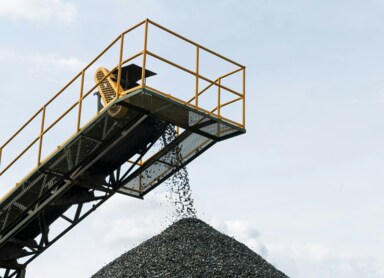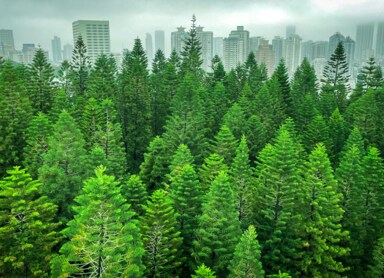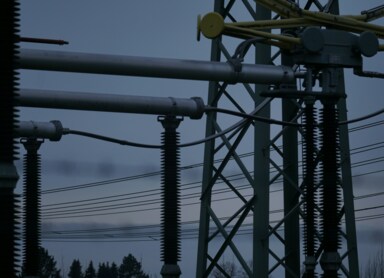What are oxygen trees and why is it worth planting them?
The fight against air pollution can take many forms, including planting vegetation that absorbs carbon dioxide and produces oxygen through the process of photosynthesis. In recent years, so-called OxyTrees, or oxygen trees, have been gaining popularity. What are they, and how can oxygen trees be used in urban environments as well as by large companies?
Oxygen trees – properties and environmental impact
OxyTrees (also known as oxygen trees) are a cultivated variety of Paulownia, created by crossing two subspecies — Paulownia fortunei and Paulownia elongata. OxyTrees were first developed by a biotechnology company in Spain, but today they enjoy worldwide popularity due to their positive environmental impact and wide range of industrial applications. The Department of Forestry and Genetics at the University of Castilla-La Mancha has even recognized OxyTrees as the most valuable Paulownia variety in terms of environmental benefits.
The unique property of oxygen trees lies in their ability to absorb much larger amounts of carbon dioxide, effectively purifying the air and producing significantly more oxygen than traditional native plants.
Oxygen trees – plants that produce more oxygen than others
Photosynthesis is essential for plant life and growth. In oxygen trees, however, this process is exceptionally efficient. It is estimated that OxyTrees can absorb up to 10 times more carbon dioxide than other trees. A single hectare of OxyTree plantation can absorb over 100 tons of CO₂ per year, making it more than ten times as effective as common species like beech or oak.
Because of these properties, planting oxygen trees helps organizations demonstrate their pro-environmental efforts in line with ESG requirements. If your company is required to submit non-financial reports, OxyTrees can be a meaningful contribution to environmental protection — and possibly help you qualify for a green building certification.
Oxygen Trees – Cultivation, Requirements, and Growing Conditions
OxyTrees are deciduous trees that can grow about 3 meters per year — roughly 25 centimeters per month. This is impressive compared to the Polish beech, which grows only 30–60 cm annually. After being cut down, the oxygen tree regenerates quickly, forming new shoots; within just three years, the trunk can reach up to 85 cm in diameter.
Their distinctive feature is a crown of very large leaves, often over 30 cm long. The trunk is anchored by a taproot system up to 9 meters deep. This rapid growth is mainly due to the genetic crossbreeding and large leaves that enable highly efficient photosynthesis.
The tree adapts easily to different climates — so easily, in fact, that some ecologists worry about potential impacts on local ecosystems. It grows well in almost any soil but prefers moist, well-drained soil with a pH between 5 and 8.9. It is fully resistant to temperatures ranging from -25°C to +45°C, making it suitable for both hot summers and cold winters in Poland.
Additionally, OxyTrees are not only useful but also visually appealing. They produce oval, greenish-gray fruits and pale purple flowers with inflorescences up to 40 cm long, making them a beautiful addition to gardens, parks, or urban green spaces.
Uses of oxygen trees in agriculture and industry
Oxygen trees are widely used in urban planting projects, providing shade, moisture, and air purification. The dense clusters of large flowers also make them visually striking.
Due to their rapid growth, OxyTrees are an excellent source of timber for the furniture industry — used to produce furniture, pallets, boards, and even boats. Once dried, the wood is strong, water-resistant, and about 30% lighter than many other hardwoods. This indirectly helps protect local forests, as Paulownia trees grow much faster than native species.
Both the leaves and flowers have agricultural value — the pollen can be used for honey production, and the leaves serve as high-energy animal feed.
Can you profit from growing oxygen trees?
For companies managing large-scale plantations, OxyTrees can be a profitable investment. A single hectare can yield up to 600 m³ of wood per growth cycle, with a market price reaching up to 1,500 PLN per cubic meter. Given their rapid growth rate, OxyTrees represent a long-term, high-yield investment.
They are especially attractive to owners of unused agricultural land, which may not be suitable for traditional crops like grains but can easily support OxyTree cultivation. However, like any investment, it comes with risks — regular fertilization, weeding, and irrigation are required, and various microorganisms may cause damage.
Are oxygen trees an invasive species?
Currently, there is no detailed research confirming the full impact of OxyTrees on local ecosystems. While they are non-native to Poland, this alone does not necessarily make them invasive.
Their rapid growth, regeneration ability, and deep root systems are noteworthy, but only time will tell if they will affect local biodiversity. It’s also worth noting that in Spain — where OxyTrees were developed — they grow faster thanks to the warm climate. Poland’s long, cold seasons may slow their growth somewhat.
Why plant oxygen trees? Environmental and practical benefits
Beyond their agricultural and industrial uses, oxygen trees play an important role in ecological balance and carbon footprint management. This connects to the concept of carbon offsetting — efforts by companies to neutralize their carbon emissions.
Offsetting doesn’t only mean purchasing carbon credits; it also includes direct environmental actions like planting trees. Such projects help compensate for emissions that cannot be reduced through other means, such as solar power installations or wind energy agreements (PPAs).
If your company aims to implement offset initiatives, planting OxyTrees can be an excellent solution. They are both highly effective and aesthetically pleasing, improving the workplace environment. Moreover, the GHG Protocol classifies tree planting as a Carbon Removal Offset, meaning a permanent method of removing harmful compounds from the atmosphere.
Planting oxygen trees may represent the future of global environmental strategy. No matter your company’s field, adopting this approach can support your ESG sustainability goals and contribute meaningfully to protecting the planet.






